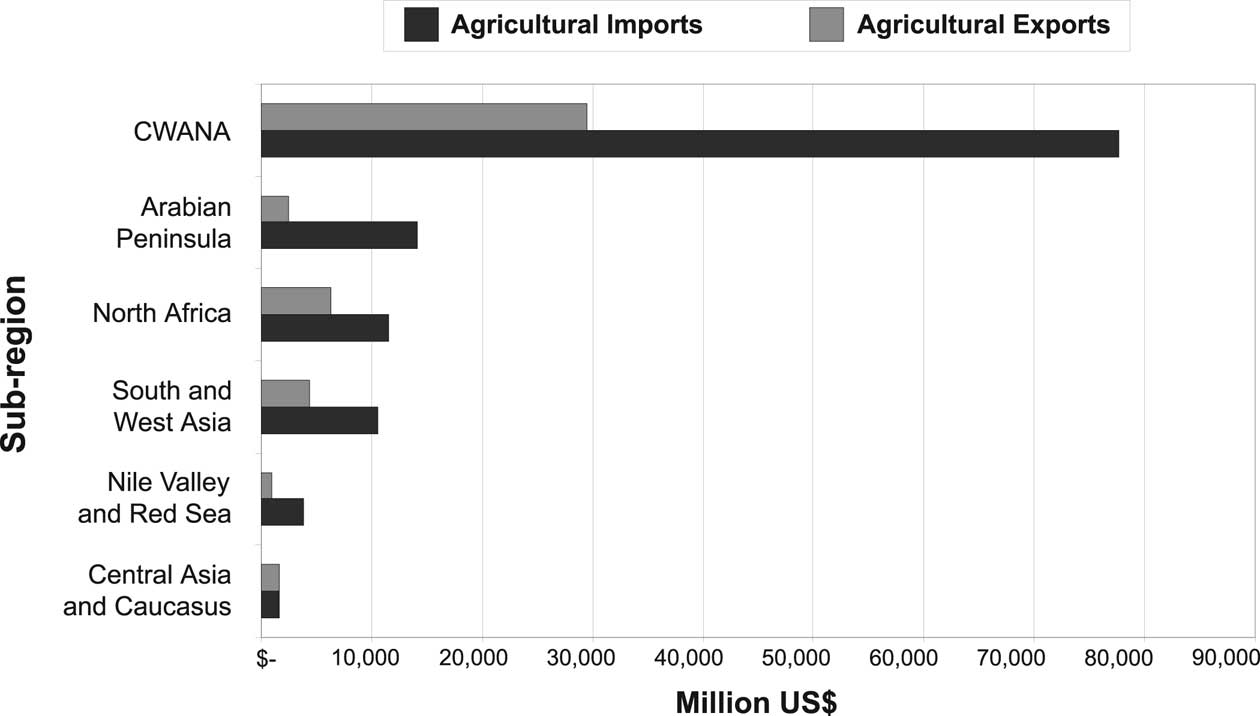
| Previous | Return to table of contents | Search Reports | Next |
| « Back to weltagrarbericht.de | ||
Setting the Scene | 13
|
National food security Agricultural imports constitute about one-fourth of CWANA's total merchandise imports, reflecting the region's vulnerability to food insecurity. Between 1991 and 1996, 15 countries had negative per capita food production growth rates (FAO, 2001). Oil-producing countries in CWANA are fast becoming the world's largest importers of food. In their quest to meet their priorities and obligations, people are driven to look at what is available today and disregard posterity. Extending cultivation to marginal and submarginal lands, overgrazing village common property and indiscriminately cutting vegetation for fodder and fuel are the easiest options. Farmers depend on subsistence farming to eke livelihoods on a fragile resource base, accelerating desertification in many countries. If the degradation continues, it may be irreversible. Agricultural imports in CWANA countries reached US$41.8 billion, while agricultural exports did not exceed US$17 billion in 2004 (Figure 1-2) (FAO, 2006c). The main commodities exported were fruits and vegetables, dates and olive oil, while the main imports were grains. Considering the water scarcity in the region, this indicates unwise waterresource management. However, profitable grain production depends on large-scale land ownership and mechanization, while fruits and vegetables depend less on land and are labor intensive. Arab countries are net importers of food. In 2003 about 68.1% of imported food was grain, while other food groups were much less: milk and dairy products (15.0%), sugar (7.7%), and oil and fats (4.1%). Because of the increase in population and other variables, the food gap between consumption and production increased |
and reached 40% in 2003. The Arab countries are relying more on other countries to feed their growing population. In 2003, in the seven countries with high and high-moderate per capita GDP, food production was low or zero, especially in grains, legumes, sugar, oil and fats, and milk and dairy products in 2003. Other countries with low-moderate and low per capita GDP have better self-sufficiency in most foods, except Djibouti, which produces only some meat and fish and foods in no other groups (AOAD, 2003). Sudan is almost self-sufficient in food. Sudan could be the food basket for all Arab countries, but there is a link between abundance of natural resources and poor growth. Also, it lacks institutions for marketing and financing, and it lacks infrastructure. These lead to low endowment and low performance. This situation also prevails in some other Arab countries. Sudan is reviewing laws of investment to encourage foreign direct investment. Migration to Arab oil countries decreased poverty in Sudan. More than half the workers in rural areas migrated, so agricultural production declined. Also, government expenditure was mainly on defense, security and loan repayment. Government expenditure on health, education and other social services was limited. Although it has natural feed sources, Libya has a protein gap. Because of drought and overgrazing, the government built 11 concentrated feed factories. Their capacity was about 963,600 tonnes per year. Actual production reached only about 367,000 tonnes in 2003. About 92% of the ingredients were imported. Since the factories were not working at full capacity, prices of local concentrated feed were higher and poorer quality than imported feed. |

Figure 1-2. Agricultural exports and imports in the CWANA region (2002-2004). Source: FAO, 2006c
| Previous | Return to table of contents | Search Reports | Next |
| « Back to weltagrarbericht.de | ||